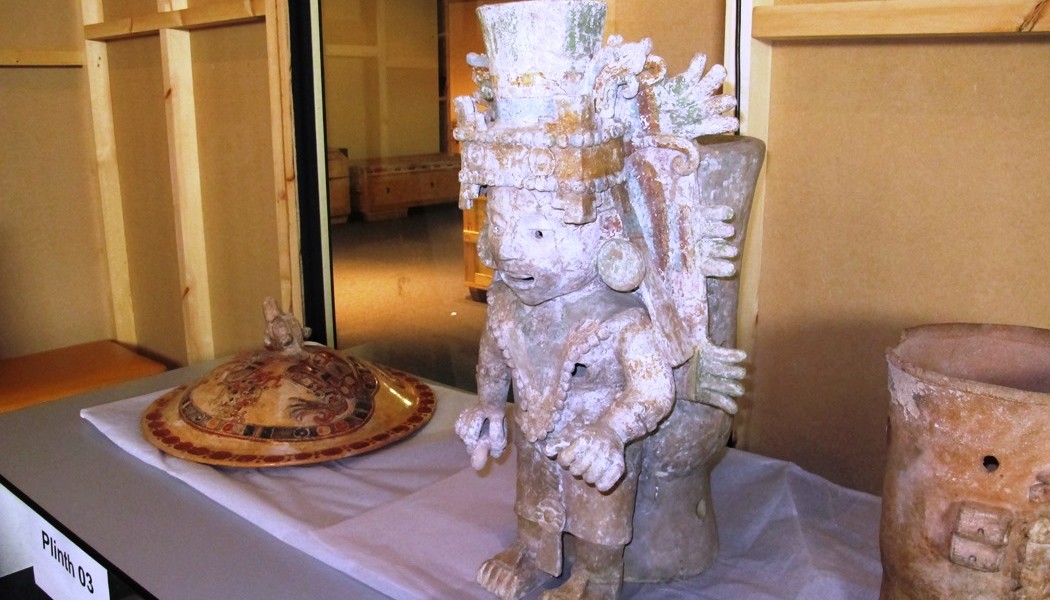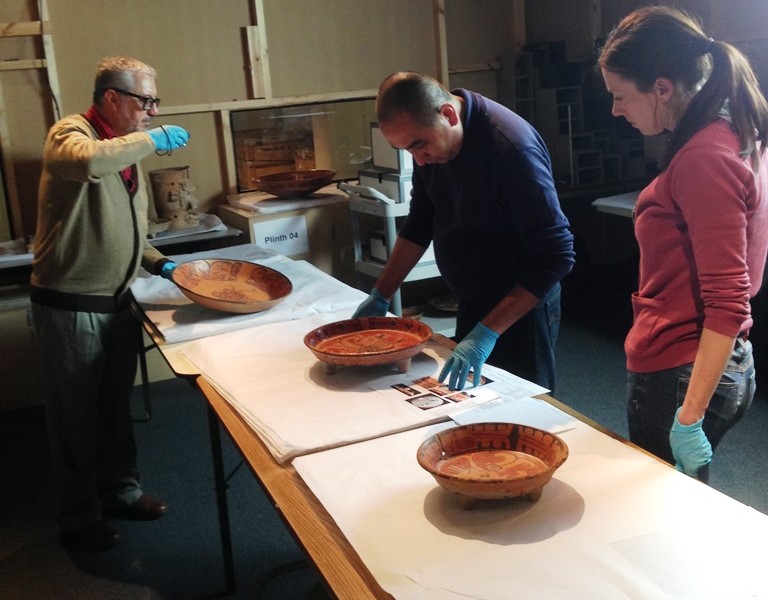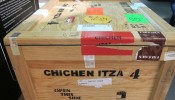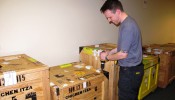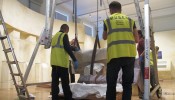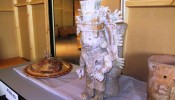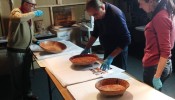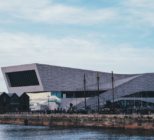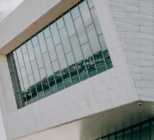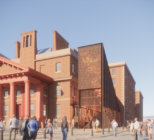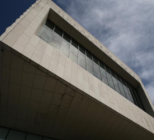There are several teams across National Museums Liverpool who support the movement of collections across our estate. These teams are responsible for the installation and de-installation of displays and assist with the packing, movement and transport of collections to locations in the UK and overseas. There is a core team of four specially trained handlers who plan and programme their work on a weekly basis, carefully timetabling requests from our diverse museums and galleries.
Larger projects are planned well in advance and sometimes require the assistance of other staff. Technicians from the production team, conservation specialists registrars as well as curatorial and exhibition colleagues with the appropriate training, will supplement the core team when required. When working on major externally funded projects we also bring in freelancers to work alongside our internal teams. On such occasions the freelancers have to meet our health & safety conditions and go through an induction process. They are supervised by a member of our team. Owing to the varied nature of National Museums Liverpool’s venues our staff are highly skilled and trained in the movement of a wide range of collection types from ornate works of art to natural history specimens and from archaeological finds to maritime archives.
World Museum was considered the ideal location for the Mayas exhibition, because the content not only complements the permanent collections, but the Museum’s large temporary exhibition space provides an area big enough to display the 385 objects for visitors to enjoy and appreciate in an appropriate setting. World Museum also receives a huge number of visitors, welcoming more than 600,000 people through its doors each year, ensuring the exhibition will be seen by many.
The exhibition was a huge undertaking and involved 101 packing crates delivered from Mexico over three days in 11 trucks. With a delivery of this size there was a significant amount of forward planning. We had to make sure that we had a specially conditioned and secure store and a particular location in the store for each crate. We also needed to ensure that we had enough equipment and staff on site to off load the packing crates as efficiently as possible. The Mayas installation took 11 days with an additional three days for snagging and involved a total of 30 people.
Before the collections arrived we had agreed the exhibition and case layouts so we knew exactly the order in which we would install the artefacts. During installation we had several teams working simultaneously. One team was responsible for installing the large sculptural pieces which were unpacked on gallery and manoeuvred into position using special lifting equipment. This process was supervised by couriers from Mexico and was carried out by specialist technicians working alongside our own staff. Running in parallel to this we had further teams opening crates, condition checking objects and moving objects onto gallery for installation. Each team involved couriers, curators, technicians and conservators.
We started planning de-installation within a couple of weeks of opening the exhibition. The process will be the reverse of installation. Our aim is to remove all small items from gallery within the first few days so that they can be condition checked and packed. The heavy lifting team will then de-install, condition check and pack the larger items on gallery. All crates will then be returned to their original storage location pending collection by he transport agent. During the packing process we seal all crates on completion and provide a consignment certificate for the art handling agent to present at customs. At collection we complete and sign receipts and seal the trucks ahead of transport to the airport. These arrangements are made by our registrars department in close liaison with the lending institution.
NML has a its own loans policy and we ask any potential borrower to make their request at least six months in advance. This allows us time to assess the condition of the objects which have been requested and to obtain information from the borrower about their facilities, their display and mounting requirements and environmental information. We write to the Museum Security Advisor at the Arts Council for confirmation that the borrowing venue has been approved by them, we also have an in house security advisor who will assist in this process as required. Curators, conservators and technicians comment on the availability and condition of the object before a final decision is made by the venue director and a formal loan agreement is issued. The object itself determines how it is packed for transport. We try to use existing packing materials where possible but if this isn’t feasible we will hire crates from suppliers or the appointed transport agent will be asked to provide suitable crates and packing materials. We use Arts Council approved transport agents and we have our own vehicles which we use to transport collections between our venues and on local journeys.
The level of packing is determined by the nature of the object and its particular destination. There are strict regulations on the materials used for crates travelling overseas. Usually, we would ask the crate supplier or the transport agent to provide packing materials and crates to the appropriate standard. The internal packing of these is often finished off by specialist handlers and conservation staff at the museum. Typically, the sort of materials used includes treated wood or metal faced shipping crates, plastic euro crates for smaller objects and non overseas transport. Internally we use conservation approved inert materials such as plastazote, Tyvek, cotton tape, acid free tissue.
Over the last three years we have sent 618 (2014-2015); 92 (2013-2014) and 371 (2012-2013) objects out on loan to UK and overseas destinations and we have received 389 (2014-2015); 358 (2013-2014) and 30 (2012-2013) objects as loans to National Museums Liverpool. Highlights of these have included 162 Wedgwood items lent to the All Russian Decorative Applied and Folk Art Museum in Moscow, 164 items from the Ethnology collections to a touring exhibition in three venues in Taiwan. We have been fortunate to be able to borrow for display Poussin’s Extreme Unction from the Fitzwilliam and Titian’s Diana and Actaeon from the National Gallery along with the recent significant loan of 385 items from the Instituto Nacional de Antropologia e Historia, Mexico forming the Mayas exhibition.
Most of our routine work is handled in-house but when we have a number of large scale projects running in parallel or when we need very particular and highly specialised expertise, we bring firms or individuals in to help us.
The safe handling and movement of collections is a core part of any museum’s activities and at National Museums Liverpool we are fortunate to have a dedicated team of trained handlers as well as other highly skilled technicians, conservators, registrars and curators. Staff who handle collections have usually participated in NML’s collections management training programme, supplemented by practical project based training as appropriate. Staff who are asked to courier objects on loan undergo additional specialised training which covers airport security and customs procedures.






